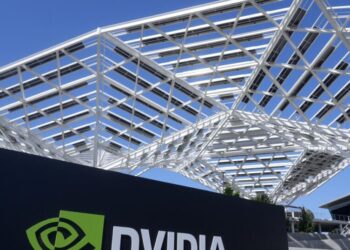It’s reasonable to worry whether sky-high valuations for artificial intelligence companies represent a bubble that will burst and wreak havoc on your retirement account.
A bursting bubble could indeed be painful in the short term. But what if we’re in a “rational bubble” that, unlike other big speculative manias in history, takes our economy to a fundamentally better place?
I’m borrowing the phrase “rational bubble” from conversations with a Nobel laureate in economics, my friend A. Michael Spence. Bubbles seem by definition irrational. They grow as investors — often hostage to exuberant, herd-like behavior — push valuations well beyond anything warranted by the fundamentals on the ground.
However, the A.I. excitement, as seen in the blowout Nvidia earnings yesterday, rightly reflects the potential transformation of the entire economy. It is economically rational to risk losing everything on several bets if just a few can deliver a thousandfold return, which some A.I. investments almost certainly will.
That’s not to say that the A.I. bubble won’t burst. Investors and governments have placed their wagers on a group of racehorses, only a handful of which will win. Yet while the rest may well be destined for the glue factory, resulting in significant losses, the race itself will yield innovations that could result in vastly superior outcomes for many than would otherwise be the case.
The bubble will pop not because investors are overestimating A.I. but because of these three forces: Think, first, of all the tech companies working on groundbreaking models, an arms race between giants. Not all will flourish, especially as the required funds — for elite engineers in high demand, sprawling data centers and energy consumption — continue to soar. While Google and Microsoft can lean on their many revenue generators, other players will have to rely even more heavily on debt funding or circular financing that will ultimately prove unsustainable.
Second, a gold rush attracts prospectors with fool’s gold. Companies plaster an A.I. label onto more mundane services, attracting less informed investors. This A.I.-washing is reminiscent of the dot-com bubble of the late 1990s, when adding “.com” to a start-up’s name was a shortcut to a dizzying, and ultimately illusory, valuation.
Third, external developments may well derail some firms. These could include sudden regulatory changes, bad actors, geopolitical fractures of the A.I. supply chain and a lack of widespread A.I. adoption. Any of these would hinder the ability of some of the companies building the models to generate enough revenue.
Surging A.I. stocks are pulling up the valuations of many other companies, some to highly elevated levels. That’s because investors attracted by a handful of big tech names have fueled a much larger buying surge into investment vehicles, including index funds, and because buyers searching for new places to put their money often venture to areas they insufficiently understand.
It’s easy to see how this ends badly. But what if the bubble is an inevitable part of developing and adopting a revolutionary tool that will fundamentally improve productivity and growth? After all, A.I. is a general-purpose technology that will most likely alter a vast range of economic activities fundamentally. Its transformative potential could be on par with electricity, offering an enormous upside through durable improvements in what we do and how we do it. It’s not just that many existing activities will be done better and more efficiently. A.I. is poised to open the door to discoveries, particularly in health and education.
Such gains would allow the economy to grow faster without kicking off inflation, something economists describe as raising the “speed limit” for noninflationary growth. Increased productivity and a larger economy provide us with more opportunities to address the problems that my generation is leaving our kids and grandkids: high levels of debt, climate change and excessive income inequality.
Whichever way you look at it, the potential payoffs of A.I. adoption are staggering — for the economy, for social sectors, and, of course, for investors. That could not be said for the majority of the big historical bubbles, such as the tulip mania of the early 17th century.
With such big payoffs, the incentives to invest in A.I. are enormous, and are reinforced by two biases: Investors believe that falling behind is far more damaging than over-investing, and they fear that they’re missing out. From their perspective, what some may ultimately see as enormous overspending is, in fact, a calculated portfolio play that fuels competition and innovation.
My optimism for our future economic well-being is based only on A.I.’s capabilities today. Yet the quest for artificial general intelligence ensures that the frontier is not static; it will continue to leap forward, promising developments that are difficult to fully comprehend now. Those will include A.I.’s convergence with innovations in robotics, life sciences and, eventually, quantum computing.
The belief in A.I.’s transformative power is justified. The resulting flood of capital is a logical response. Some will lose. Overall, we will be much better off.
Mohamed A. El-Erian is the chairman of Gramercy Funds Management and the former president of Queens’ College at Cambridge University and the chief executive of PIMCO, an investment management firm.
The Times is committed to publishing a diversity of letters to the editor. We’d like to hear what you think about this or any of our articles. Here are some tips. And here’s our email: [email protected].
Follow the New York Times Opinion section on Facebook, Instagram, TikTok, Bluesky, WhatsApp and Threads.
The post A.I. Is a Bubble. Maybe That’s OK. appeared first on New York Times.




